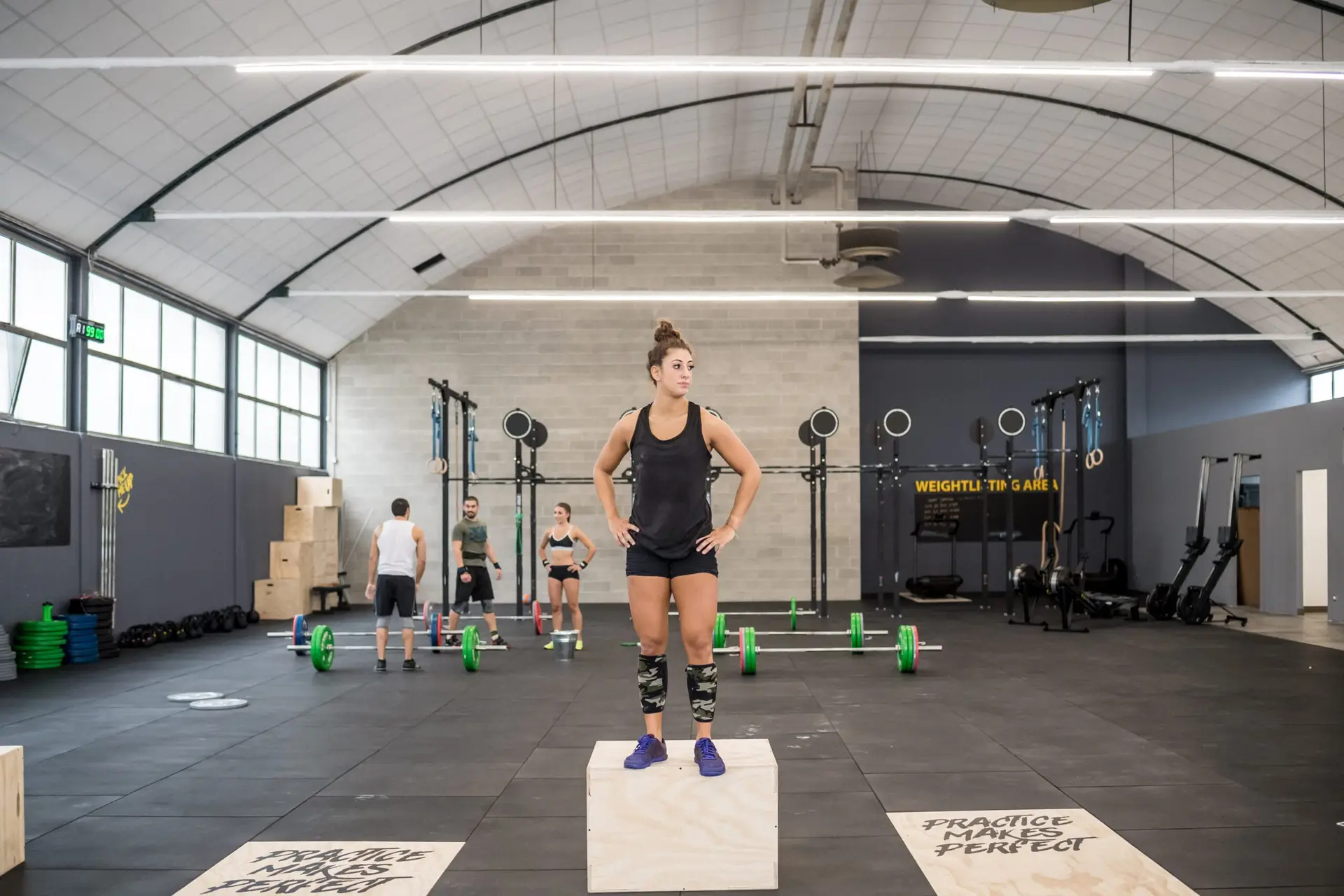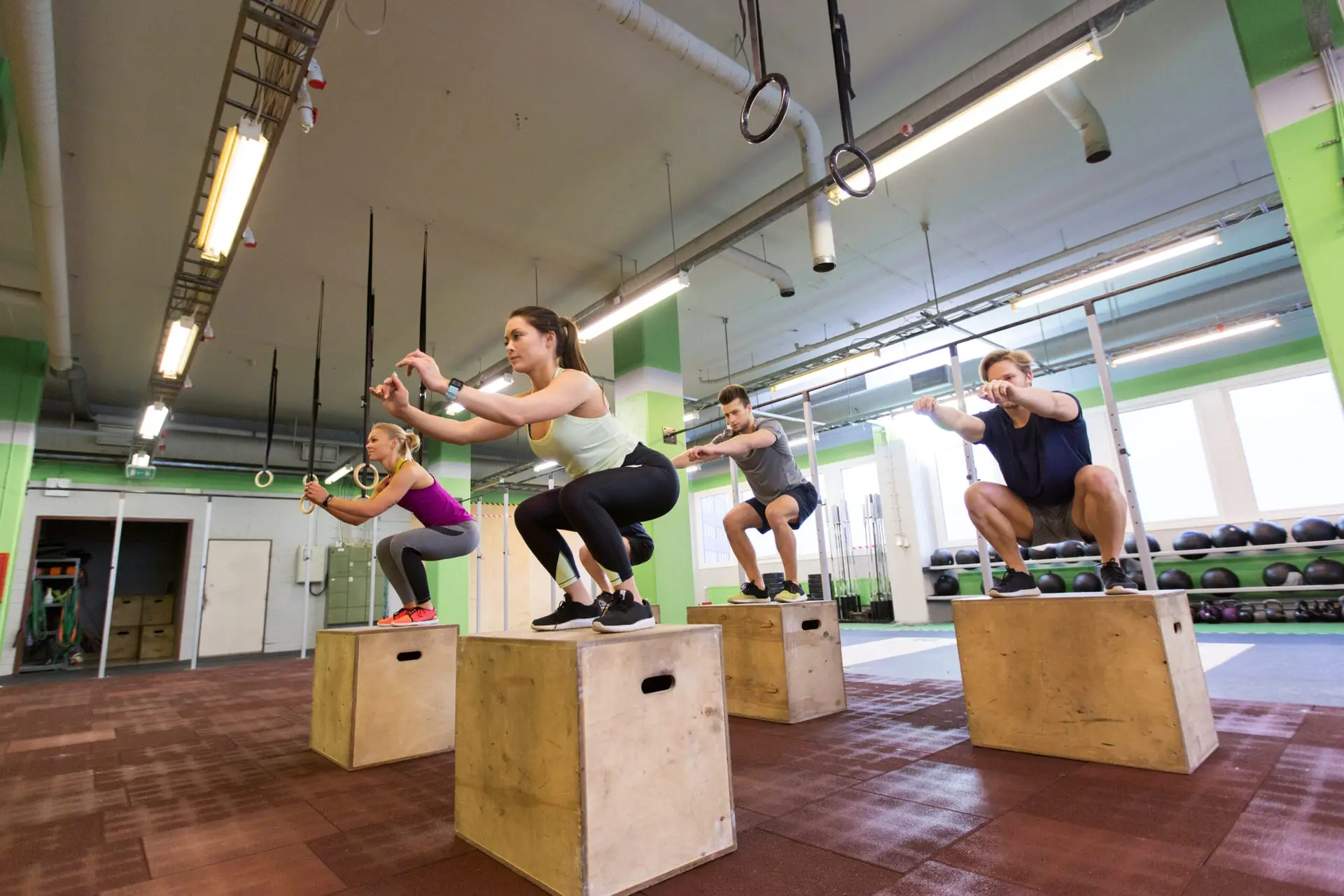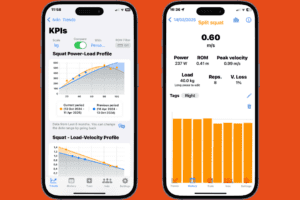Jumping is one of the most fundamental movements in sports, and measuring jump height has become a key indicator of athletic performance. From recreational athletes striving to improve their fitness to elite professionals showcasing their explosive power, jump height reveals a lot about an individual’s strength, speed, and coordination. Questions like “What’s the average jump height?” or “How high should a drop jump be?” not only pique curiosity but also offer a chance to dive into the science behind jumping.
In this blog, we’ll explore everything from the mechanics of jumping to legendary vertical leaps by some of the world’s most famous athletes. Whether you’re curious about how to measure your jump height at home or want to know if 70 cm is a good vertical, this comprehensive guide will provide insights, practical tips, and fascinating statistics. Let’s leap into the world of jumps and discover how you can maximize your own potential.
DOWNLOAD SPLEEFT APP NOW FOR iOS, ANDROID AND APPLE WATCH!
Understanding Jump Height Norms and Their Importance
Measuring jump height is more than just a number; it’s a critical indicator of your explosive power, lower-body strength, and athletic potential. Vertical jump tests are widely used across various sports and fitness programs to assess performance, track progress, and identify areas for improvement. Whether you’re measuring your jump at home, in a gym, or with professional tools, understanding how your results compare to established norms is key to setting realistic goals and pushing your limits.
The table below provides a detailed breakdown of jump height norms for adult men and women, categorized by performance levels. These benchmarks are based on controlled testing conditions, such as jumps off two legs, no run-up, no pause, and with full arm movement for maximum height. By comparing your results to these standards, you can identify where you stand and what it takes to reach the next level of performance.
Many people start their jumping journey by wondering, what is a good vertical jump? It really depends on your age, gender, and fitness level, but benchmarks can give you a solid reference point. For instance, the average male vertical jump hovers around 16-20 inches for the general population, while athletes often push beyond that. Knowing the vertical jump average helps set realistic goals—whether you’re aiming to beat the average human jump height or tracking progress with an app like Spleeft to see how your explosive power stacks up over time.
| Rating | Males (inches) | Males (cm) | Females (inches) | Females (cm) | Description |
|---|---|---|---|---|---|
| Elite | > 30 | > 76 | > 26 | > 66 | Exceptional level, seen in professional athletes and elite sports. |
| Excellent | 26 – 30 | 66 – 76 | 22 – 26 | 56 – 66 | Above average for competitive athletes or dedicated fitness enthusiasts. |
| Very Good | 22 – 26 | 56 – 66 | 18 – 22 | 46 – 56 | Represents well-trained individuals with solid jumping ability. |
| Above Average | 18 – 22 | 46 – 56 | 14 – 18 | 36 – 46 | Slightly better than general population, consistent with active individuals. |
| Average | 14 – 18 | 36 – 46 | 10 – 14 | 26 – 36 | Represents the general population with average fitness levels. |
| Below Average | 10 – 14 | 26 – 36 | 6 – 10 | 16 – 26 | Indicates limited jumping ability, possibly due to lack of training or fitness. |
| Poor | 6 – 10 | 16 – 26 | 4 – 6 | 11 – 16 | Typically seen in untrained individuals with minimal explosive power. |
| Very Poor | < 6 | < 16 | < 4 | < 11 | Reflects sedentary lifestyle or limited lower-body strength. |
Jump Height Explained
What’s the average jump height?

The average jump height varies greatly depending on factors such as age, gender, athleticism, and training background. For the general population:
- Men: An average vertical jump height is around 16-20 inches (40-50 cm).
- Women: Typically, the average vertical jump is 12-16 inches (30-40 cm).
For athletes, the benchmarks are much higher:
- Recreational Athletes: Men average 20-24 inches (50-60 cm), while women average 16-20 inches (40-50 cm).
- Elite Athletes: Jump heights often exceed 30 inches (76 cm) for men and 24 inches (61 cm) for women, with some reaching exceptional levels of explosiveness.
Understanding your average jump height in relation to these benchmarks can help you gauge your performance and identify areas for improvement. Tools like Spleeft allow you to measure and track your progress with precision, ensuring that every jump is accurately recorded.
If you’re curious about how your results compare globally, consider that the average human vertical jump for adults is typically lower in sedentary folks, around 12-16 inches for women and slightly higher for men. Tools like Spleeft make it easy to log your jumps and see if you’re above or below the vertical jump average, turning raw data into actionable insights for better training.
How to calculate jump height?
Calculating jump height can be done using various methods, ranging from manual measurements to sophisticated tools:
- Wall Method (Manual):
- Stand next to a wall and reach as high as possible, marking your standing reach.
- Perform a jump and mark the highest point you can touch.
- Subtract your standing reach from your jump height.
- Time of Flight (Physics Formula):
- Using the time your feet are off the ground during the jump: Jump Height=18×g×(time of flight)2text{Jump Height} = frac{1}{8} times g times (text{time of flight})^2Jump Height=81×g×(time of flight)2 Where g=9.8 m/s2g = 9.8 , m/s^2g=9.8m/s2 (gravitational constant).
- Technology:
- Apps like Spleeft, motion capture systems, or force platforms provide highly accurate measurements by calculating metrics such as ground contact time and takeoff velocity.
By using technology, you can remove errors in manual calculations and gain deeper insights into your performance trends.
What is a height jump?
A height jump, often referred to as a vertical jump, is the measurement of how high you can elevate your center of mass off the ground. This can be assessed through various types of jumps, including:
- Countermovement Jump (CMJ): A jump performed with a preparatory dip to generate momentum.
- Standing Vertical Jump: A jump without arm swing or preparatory movement.
- Depth Jump: A reactive jump performed after stepping off a platform.
Height jumps are commonly used to evaluate lower-body power, coordination, and athletic potential.
What determines jump height?
Several factors influence your jump height:
- Muscular Strength: Stronger legs (glutes, quads, hamstrings, and calves) contribute to more powerful takeoffs.
- Explosiveness: Fast-twitch muscle fibers enable rapid force generation, essential for high jumps.
- Technique: Proper form, including a well-timed countermovement, maximizes jump height.
- Mobility: Flexible hips, knees, and ankles allow for an optimal range of motion.
- Genetics: Natural muscle composition and tendon elasticity play a significant role in determining maximum potential.
With focused training and tools like Spleeft to track metrics, you can optimize each of these factors to improve jump height.
Measuring and Standards
How high should a drop jump be?
The ideal height for a drop jump depends on your experience and training goals. Drop jumps are designed to enhance your reactive strength by utilizing the stretch-shortening cycle (SSC). Here are some general guidelines:
- Beginners: Start with a height of 12-18 inches (30-45 cm) to practice safe landings and proper form.
- Intermediate: Increase to 18-24 inches (45-60 cm) to build strength and power.
- Advanced: Use 24-36 inches (60-90 cm) to maximize explosive gains.
For athletes, the key is not just height but efficiency. Using tools like Spleeft, you can measure metrics such as ground contact time and reactive strength index (RSI-Mod) to ensure optimal results from your drop jump training.
How high is a jump standard?
“Jump standard” depends on the context. Here’s a breakdown for various scenarios:
- Fitness Standards:
- Average jump height: 15-20 inches (38-50 cm).
- Athletic jump height: 20-30 inches (50-76 cm).
- Sports Standards:
- Basketball and volleyball often require verticals of 30+ inches (76 cm) for elite performance.
- Military Standards:
- Many armed forces require a minimum vertical jump of 20 inches (50 cm) for physical fitness assessments.
Understanding these standards can help you set realistic goals. Measuring your jump with Spleeft ensures you’re meeting or exceeding the standards relevant to your training or competition.
How can I measure my jump height at home?
Measuring jump height at home is simple with a few tools:
- Wall Method:
- Stand against a wall and mark your standing reach.
- Perform a jump and mark the highest point you can reach.
- Subtract the standing reach from the jump height.
- Phone Apps:
- Apps like Spleeft use motion detection to measure jump height accurately.
- Tape and Mat:
- Jump onto a plyometric box or a marked surface and measure the height difference.
These methods provide quick and reliable insights into your jump performance, helping you track progress without needing professional equipment.
- Start by benchmarking against norms: The average human vertical jump is a great baseline to beat.
- If your goal is surpassing the average male vertical jump, use Spleeft’s tracking features to monitor weekly gains.
- Remember, what is a good vertical jump evolves with age—focus on personal bests for long-term motivation.
What is normal box jump height?
Box jump height depends on skill level and training objectives:
- Beginners: 12-18 inches (30-45 cm).
- Intermediate: 18-24 inches (45-60 cm).
- Advanced: 24-36 inches (60-90 cm).
The goal of a box jump is to build explosive power and coordination, not to aim for the highest box possible. Proper form and landing mechanics are crucial to avoid injury.
What height is too high to jump from?
The height at which a jump becomes “too high” depends on several factors, including your experience, landing technique, and physical condition. Jumping from excessive heights can lead to injuries, particularly in the knees, ankles, and lower back, if proper precautions are not taken. Here’s a general guideline for what height is considered safe:
- Recreational Athletes and Beginners: Jumps from 2-3 feet (60-90 cm) are generally safe if proper landing mechanics are used. This height allows for practice without overwhelming the body.
- Trained Athletes: Experienced jumpers can safely handle heights of 4-6 feet (120-180 cm), especially when practicing depth jumps or high-impact landings as part of a controlled training program.
- Risky Heights: Jumps from over 6 feet (180 cm) are considered risky for most individuals unless they have specific training, such as in parkour, stunt work, or gymnastics.
Key considerations when assessing jump safety include:
- Landing Surface: Hard surfaces, such as concrete, increase the impact force and risk of injury. Softer surfaces or mats reduce this risk significantly.
- Landing Mechanics: Proper technique involves bending your knees, hips, and ankles to absorb the impact and distribute the force across your muscles.
- Body Weight and Strength: Heavier individuals or those with less lower-body strength are at greater risk when jumping from high heights.
Using tools like Spleeft can help monitor jump metrics like ground contact time and landing force, ensuring your jumps are safe and efficient.
Benchmarks and Comparisons

Is 70 cm vertical good?
A 70 cm (27.5 inches) vertical jump is excellent and puts you well above average. Here’s how it compares:
- Recreational Athletes: Average jumps range between 40-50 cm (16-20 inches).
- Competitive Athletes: Typical verticals are 50-60 cm (20-24 inches).
- Elite Athletes: Vertical jumps over 70 cm are considered exceptional.
Reaching this level requires a combination of strength training, plyometrics, and proper technique. With tools like Spleeft, you can optimize your training to achieve these benchmarks and track improvements over time.
When evaluating your own performance, a common question is what is a good vertical jump for everyday athletes versus pros. While a 70 cm jump is elite, the average male vertical jump falls much lower, often in the 16-20 inch range, depending on training. This highlights why understanding the average human jump height is so useful—it motivates consistent improvement. With Spleeft, you can measure repeatedly and watch your numbers climb from average to exceptional through targeted plyometrics and strength work.
Is 27 inches too big for vertical?
A vertical jump of 27 inches is far from “too big”—in fact, it’s an impressive and competitive measurement. Here’s how a 27-inch vertical jump compares to different levels of athleticism:
- Recreational Athletes: A vertical jump between 16-20 inches (40-50 cm) is average, so a 27-inch jump demonstrates above-average explosiveness.
- Competitive Athletes: Vertical jumps of 20-30 inches (50-76 cm) are common, meaning a 27-inch jump places you within the competitive range.
- Elite Athletes: Vertical jumps exceeding 30 inches (76 cm) are exceptional, but a 27-inch vertical is still highly respectable and reflects significant lower-body power.
Achieving a 27-inch vertical jump requires a combination of strength, technique, and fast-twitch muscle fiber development. If you’re aiming for even higher numbers, focus on:
- Strength Training: Squats, deadlifts, and lunges build the power needed for explosive takeoff.
- Plyometrics: Depth jumps, box jumps, and bounding drills enhance reactive strength and the stretch-shortening cycle.
- Velocity Training: Using Spleeft to monitor barbell velocity ensures that your lifts are performed with maximum explosiveness.
In short, a 27-inch vertical jump is a strong achievement and a testament to your athletic ability.
How rare is a 40 inch vertical?
A 40-inch vertical jump is extraordinarily rare and places an athlete in an elite category. Here’s why:
- General Population:
The average vertical jump height for the general population is around 15-20 inches (38-50 cm). A 40-inch vertical is more than double this average. - Recreational Athletes:
Most recreational athletes achieve verticals between 20-30 inches (50-76 cm), making a 40-inch jump a feat reserved for only the most explosive individuals. - Elite Athletes:
Even among elite athletes, such as professional basketball players, volleyball players, and sprinters, a 40-inch vertical is uncommon. It’s often seen in exceptional talents like Michael Jordan, Zion Williamson, or Vince Carter. - Genetics and Training:
A 40-inch vertical requires a unique combination of:- Genetics: Favorable muscle fiber composition (predominantly fast-twitch fibers).
- Training: Years of strength, plyometric, and velocity-based training.
- Technique: Perfecting the mechanics of takeoff and landing.
For context, professional basketball players, on average, have vertical jumps of around 28-34 inches (71-86 cm). A 40-inch jump is typically achieved by outliers with extraordinary athleticism.
If you’re striving to achieve a 40-inch vertical, tools like Spleeft can help you monitor progress and optimize your training plan by tracking key metrics such as jump height, ground contact time, and peak velocity.
What is the best depth jump height?
The ideal depth jump height depends on your experience level and training goals. Depth jumps are a plyometric exercise designed to improve reactive strength by utilizing the stretch-shortening cycle (SSC). Choosing the right height ensures you maximize training benefits while minimizing injury risks. Here’s a breakdown:
- Beginners: 12-18 inches (30-45 cm)
Starting with lower heights allows beginners to develop proper landing mechanics and adapt to the SSC demands. This height is suitable for building foundational explosive power. - Intermediate Athletes: 18-24 inches (45-60 cm)
For those with some plyometric training experience, this height provides a balance between challenge and safety. It enhances the ability to produce force quickly without overwhelming the body. - Advanced Athletes: 24-36 inches (60-90 cm)
Experienced athletes looking to maximize power output and reactive strength can use higher platforms. At this level, it’s crucial to monitor metrics like ground contact time and ensure efficient force transfer during jumps. - Elite-Level Training: Over 36 inches (90 cm)
Rarely used outside professional or elite athletic training, these heights are only recommended for individuals with exceptional strength, experience, and technique. Even at this level, jumps should be performed under expert supervision.
Using technology like Spleeft, athletes can optimize their depth jump training by tracking metrics like RSI-Mod and jump height. This ensures that every depth jump is performed at the ideal intensity for maximum gains.
What is the maximum height of the jump?
The maximum vertical jump height for humans showcases the limits of power and explosiveness:
- Standing Vertical Jump Record: Kadour Ziani holds the record at 46 inches (117 cm), achieved without a running start.
- Running Vertical Jump Record: The Guinness World Record for a running vertical jump is 60 inches (152 cm).
While these heights are rare, most athletes can make significant improvements to their jump height with focused training. Factors like genetics, training history, and fast-twitch muscle fiber composition all play critical roles in determining your maximum potential.
Elite Athletes and Their Vertical Jumps

Vertical jumps are one of the most impressive displays of athleticism, and elite athletes often boast numbers that leave us in awe. Let’s dive into the vertical leap statistics of some of the most famous names in sports, addressing each question directly.
What was Michael Jordan’s vertical?
Michael Jordan is often considered the gold standard for vertical jumps. His vertical leap was reported to be 46 inches (116 cm), allowing him to seemingly defy gravity on the basketball court. This incredible jump height is a testament to his explosive power, technique, and unparalleled athleticism.
What is Bronny James vertical?
Bronny James, son of LeBron James, is making waves in basketball. His vertical jump is reportedly around 34 inches (86 cm), which is impressive for a young athlete still refining his skills and physique. With continued training, his vertical could potentially rival his father’s.
What is Zion Williamson’s vertical?
Zion Williamson, known for his power and explosiveness, has a vertical jump of 45 inches (114 cm). Despite his larger frame, Williamson’s ability to generate such explosive force makes him one of the most exciting players to watch in the NBA.
How much was Shaq’s vertical?
Shaquille O’Neal, due to his size and dominance, didn’t rely heavily on vertical jump measurements. However, during his prime, Shaq’s vertical was estimated at 32 inches (81 cm)—incredible for a player weighing over 300 pounds.
What is LeBron’s vert?
LeBron James, often compared to Michael Jordan, has a vertical jump of 40 inches (102 cm). Known for his versatility and athleticism, LeBron’s vertical leap is a critical part of his game, allowing him to perform jaw-dropping dunks and chase-down blocks.
What is Yao Ming vertical?
As one of the tallest players in NBA history at 7’6″ (229 cm), Yao Ming wasn’t known for his vertical leap. His jump height is estimated at 20-25 inches (51-63 cm), which was sufficient for his style of play, given his height advantage.
What was Kobe Bryant’s vertical?
Kobe Bryant, known for his work ethic and skill, had a vertical jump of 38 inches (97 cm). This allowed him to execute high-flying dunks and acrobatic plays, making him one of the most electrifying players in NBA history.
What is Steph Curry’s vert?
Steph Curry, more renowned for his shooting than his vertical, has a reported vertical jump of 35 inches (89 cm). While not as high as some of the other stars on this list, Curry’s explosiveness and agility play a significant role in his game.
What is Kyrie Irving’s vertical?
Kyrie Irving, known for his ball-handling and scoring ability, has a vertical jump of around 34 inches (86 cm). His vertical complements his quickness and creativity on the court, making him a dynamic scorer.
What was Scottie Pippen’s vertical?
Scottie Pippen, Michael Jordan’s legendary teammate, had a vertical jump of approximately 39 inches (99 cm). This athleticism contributed to his prowess as a defender, scorer, and all-around player.
What was Randy Moss vertical?
Randy Moss, one of the greatest wide receivers in NFL history, had a vertical jump of 42 inches (107 cm). His leaping ability, combined with his speed and hands, made him nearly unstoppable in contested catches.
What is Jordan Walsh vertical?
Jordan Walsh, an emerging basketball star, has a vertical jump reported at 40 inches (102 cm). His jumping ability, paired with his length and athleticism, gives him significant potential on both ends of the court.
Conclusion
Jump height is more than just a number; it’s a reflection of athletic ability, training efficiency, and even genetics. Whether you’re working to improve your vertical for sports performance, fitness goals, or personal satisfaction, understanding the factors that influence jumping ability is key. From exploring the best drop jump height to uncovering the record-setting verticals of legends like Michael Jordan and LeBron James, this blog has highlighted the fascinating diversity in human jumping performance.
Improving your jump height requires a combination of strength training, plyometrics, and technique refinement. With tools like Spleeft, tracking your progress becomes easier, ensuring your efforts lead to measurable improvements. Whether you’re a casual enthusiast or an elite athlete, there’s always room to reach new heights—literally. So, take these insights, put them into action, and watch your vertical leap soar!

Iván de Lucas Rogero
MSC Physical Performance & CEO SpleeftApp
Dedicated to improving athletic performance and cycling training, combining science and technology to drive results.





